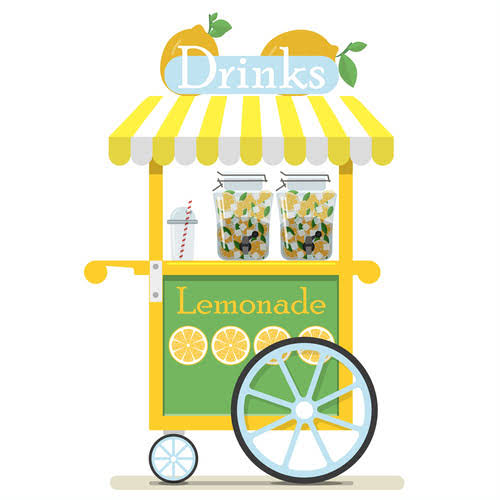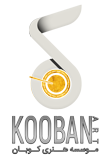Content

It is most useful among companies that require a large capital investment to conduct business, like manufacturers. Under U.S. GAAP reporting, fixed assets are typically capitalized and expensed across their useful life assumption on the income statement. Companies purchase non-current assets – resources that provide positive economic benefits – to generate revenue as part of their core operations. The company’s inventory also belongs in this category, whether it consists of raw materials, works in progress, or finished goods. All these are classified as current assets because the company expects to generate cash when they are sold. These items provide for the day-to-day funding of business operations.
- To accurately determine the Net Income (profit) for a period, incremental depreciation of the total value of the asset must be charged against the revenue of the same period.
- “Fixed assets are recorded on the balance sheet as part of the company’s assets when they are put into service,” says Zeiter.
- Explore the full asset management spectrum and which choices are the right ones.
- Upon dividing CapEx by the useful life assumption, we arrive at $50k for the depreciation expense.
- It can also be a slow method for staying on top of fixed asset inventory, when fleets of vehicles are moved between locations or the technology is complex.
- Easily add, change, dispose or transfer fixed assets for your business or your clients.
They often look at the fixed asset turnover ratio to understand how well a company uses its fixed assets to generate sales. It’s often used when comparing more than one company as a potential investment. Expenses that must be taken in the current period (they cannot be capitalized) include Items like utilities, insurance, office supplies, and any item under a certain capitalization threshold. These are considered expenses because they are directly related to a particular accounting period. Fixed assets are items a company buys with the knowledge they’ll own them for more than a year. In even plainer language, fixed assets are things you can see and touch that your business plans to hold and use for a while.
What is the difference between fixed assets and current assets?
An asset represents an economic resource owned or controlled by, for example, a company. An economic resource is something that may be scarce and has the ability to produce economic benefit by generating cash inflows or decreasing cash outflows. Current assets are sometimes listed as current accounts or liquid assets. For https://www.bookstime.com/articles/invoicing-tools example, a company that purchases a printer for $1,000 would record an asset on its balance sheet for $1,000. Over its useful life, the printer would gradually decapitalize itself from the balance sheet. However, the real cash outflow of $2 million is reflected on the cash flow statement (CFS) during the year of purchase.

Collectables such as art and antiques are likewise not eligible to be depreciated. They are also expected to retain their value or even increase in value. Like most types of software, the best asset management software programs offer many levels of security.
Payroll, compensation, pension & benefits
The primary objective of a business entity is to be profitable and increase the wealth of its owners. To do so, management must exercise due care and diligence by matching the expenses for a given period with the revenues of the same period. The period of use of revenue generating assets is usually more than a year, i.e. long term. To accurately determine the Net Income (profit) for a period, incremental depreciation of the total value of the asset must be charged against the revenue of the same period. For example, a delivery company would classify the vehicles it owns as fixed assets.
- Even if they don’t, they are likely to be superseded by other options.
- Depreciation begins one month after a fixed asset is placed into service and continues until an item is fully depreciated or disposed of either through salvage or sale.
- Here is the example of how fixed assets are classify in the balance sheet of the company.
- On the other hand, current assets are assets that the company plans to use within a year and can be converted to cash easily.
- Both current and fixed assets do, however, appear on the balance sheet.
- These might be things that support the company’s primary operations, such as its buildings, or that generate revenue, such as machines or inventory.
- For comparison, consider the purchase of inventory, which is cycled out fairly quickly in most cases, unless the company is very inefficient at working capital management.
In the context of business, the most obvious example of a non-depreciable asset is land. Buildings, by contrast, can be depreciated (providing they are owned rather than rented or leased). In simple terms, there is generally a strong link between the price of an item and how long it is expected to last. But it’s important what is a fixed asset to note that the definition of a fixed asset hinges on its expected lifespan rather than its price. Yet, inventory is classified as a current asset, whereas PP&E is treated as a non-current asset. Unlike current assets, non-current assets are typically illiquid and cannot be converted into cash within twelve months.
What Is a Current Asset?
In some businesses, as much as 40 percent of investment goes to buying equipment and vehicles. For completeness, non-current assets are also reduced in value over their useful life. As non-current assets are intangible, the process is known as amortisation.

If a cost is capitalized instead of expensed, the company will show both an increase in assets and equity — all else being equal. Proper categorization could help them to do the reconciliation effectively and correctly. Proper categorization of assets could also assist the accountant in doing fixed assets depreciation calculations correctly and effectively. These assets are not intended for resale and are expected to benefit the business over one accounting period.
Build your dream business for $1/month
However, a company that manufactures vehicles would classify the same vehicles as inventory. Therefore, consider the nature of a company’s business when classifying fixed assets. There are many benefits that an entity can obtain from the proper categorization of fixed assets.
- Fixed asset management is the process of tracking computers, vehicles or any other physical object you would consider an “asset” to your business.
- It also assists with checking security protocols and ensuring that technology is up to date, and then disposing of technology assets when they become obsolete.
- A higher turnover rate means greater success in its ability to manage fixed-asset investments.
- In some cases, the asset may become obsolete and will, therefore, be disposed of without receiving any payment in return.
- By contrast, the jeweller expects to use the diamonds in a commission they need to complete within a month.
The capitalized software costs are recognized similarly to certain intangible assets, as the costs are capitalized and amortized over their useful life. On the other hand, non-current assets (or fixed assets) are those that are expected to be used in producing goods or services for a period longer than one year. However, certain labor is allowed to be capitalized and spread out over time. This is typically labor that is identified as directly related to the construction, assembly, installation, or maintenance of capitalized assets. This essentially attaches that specific labor expense with the capitalized asset itself.
